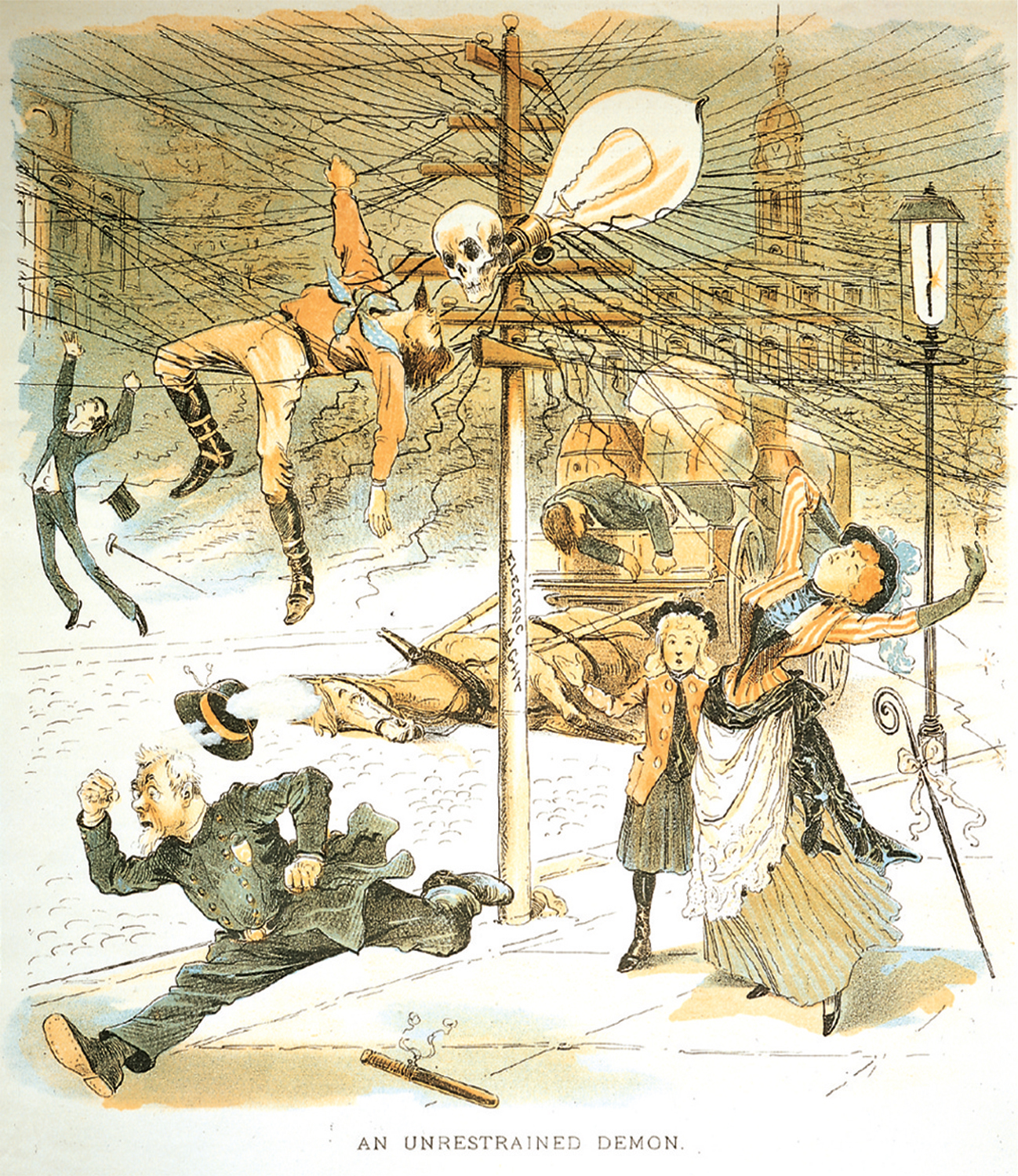The American Promise:
Printed Page 503
The American Promise Value
Edition: Printed Page 479
New Inventions: The Telephone and the Telegraph
The second half of the nineteenth century was an age of invention. Men like Thomas Alva Edison and Alexander Graham Bell became folk heroes. But no matter how dramatic the inventors or the inventions, the new electric and telephone industries pioneered by Edison and Bell soon eclipsed their inventors and fell under the control of bankers and industrialists.
Notable American Inventions 1865–1899
| 1865 | Railroad sleeping car |
| 1867 | Typewriter |
| 1868 | Railroad refrigerator car |
| 1870 | Stock ticker |
| 1874 | Barbed wire |
| 1876 | Telephone |
| 1877 | Phonograph |
| 1879 | Incandescent lightbulb |
| 1882 | Electric fan |
| 1885 | Adding machine |
| 1886 | Coca- |
| 1888 | Kodak camera |
| 1890 | Electric chair |
| 1891 | Zipper |
| 1895 | Safety razor |
| 1896 | Electric stove |
| 1899 | Tape recorder |
Alexander Graham Bell came to America from Scotland at the age of twenty-

Even more than Alexander Graham Bell, inventor Thomas Alva Edison embodied the old-
Edison, in competition with George W. Westinghouse, pioneered the use of electricity as an energy source. By the late nineteenth century, electricity had become a part of American urban life. It powered trolley cars and lighted factories, homes, and office buildings. Indeed, electricity became so prevalent in urban life that it symbolized the city, whose bright lights contrasted with rural America, left largely in the dark.
The day of the inventor quietly yielded to the heyday of the corporation. In 1892, the electric industry consolidated. Reflecting a nationwide trend in business, Edison General Electric dropped the name of its inventor, becoming simply General Electric (GE). For years, an embittered Edison refused to set foot inside a GE building. GE, a prime example of the trend toward business consolidation, soon dominated the market.
REVIEW When, why, and how did the transcontinental railroad system develop, and what was its impact on American business?